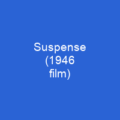Suspense: The Art of Keeping You on the Edge
Imagine sitting in a dark theater, heart racing as you wait for the next twist in the story. That’s suspense, the masterful art of keeping your audience on tenterhooks. But what exactly is it? Is it just about uncertainty or does it have deeper layers?
Defining Suspense: A State of Anticipation
Suspense, in its essence, is a state of anxiety or excitement caused by mysteriousness, uncertainty, doubt, or undecidedness. It’s that moment when you’re eagerly waiting to see what happens next, and it’s one of the most powerful tools in storytelling.
Types of Suspense: A Kaleidoscope of Techniques
Suspense comes in many forms, each as unique as a fingerprint. You can achieve it by withholding information, creating tension, or using foreshadowing. But did you know there are different types of suspense? Let’s explore them:
- Suspense without uncertainty: This is rare but intriguing, where the outcome is known, yet the journey remains thrilling.
- Suspense with anticipation: Think of precognition or knowing what will happen but not how it will unfold. It’s like a puzzle you can’t stop trying to solve.
- Suspense by contradiction: When the protagonist dies, for instance, creating a stark contrast between expectation and reality. This type of suspense is both shocking and memorable.
The Role of Suspense in Storytelling
Now that we’ve defined it, let’s talk about why suspense is so crucial in narratives. It’s a major device used in literature, films, television, and plays to secure and maintain interest. But how does it work?
Suspense Through Repetition: A Double-Edged Sword
Repetition can be a powerful tool, but it also has its limits. While knowing the outcome might not create suspense, it doesn’t mean true repeat audiences are rare. In fact, uncertainty remains effective even in familiar stories because of the holes in memory or the expectation of fictional worlds.
Suspense and Other Literary Devices
Suspense often goes hand in hand with other literary devices like adrenaline, cliffhangers, conflict, fear, mystery fiction, and plot twists. These elements work together to create a rich tapestry that keeps the audience engaged.
Exploring Suspense: A Journey Through Theories
The study of suspense is vast and complex, with theories from various scholars providing unique insights. From J. Wulff’s Suspense: Conceptualizations, theoretical analyses, and empirical explorations to Gary Carey and Mary Ellen Snodgrass’ A Multicultural Dictionary of Literary Terms, each theory adds a layer to our understanding.
The Paradox of Suspense: A Dilemma Worth Exploring
One fascinating aspect is the paradox of suspense. As Laurie Henry explains in her book The Fiction Dictionary, it’s a concept that challenges us to think deeply about how we experience stories. It’s like walking a tightrope, where every step must be carefully placed.
Conclusion: The Power of Suspense
Suspense is more than just a tool; it’s the heartbeat of storytelling. Whether you’re writing a novel or crafting a screenplay, understanding and utilizing suspense can transform your narrative into something unforgettable. So, the next time you sit down to write, remember: suspense isn’t just about uncertainty—it’s about creating that perfect balance between anticipation and revelation.

You want to know more about Suspense?
This page is based on the article Suspense published in Wikipedia (retrieved on December 16, 2024) and was automatically summarized using artificial intelligence.







